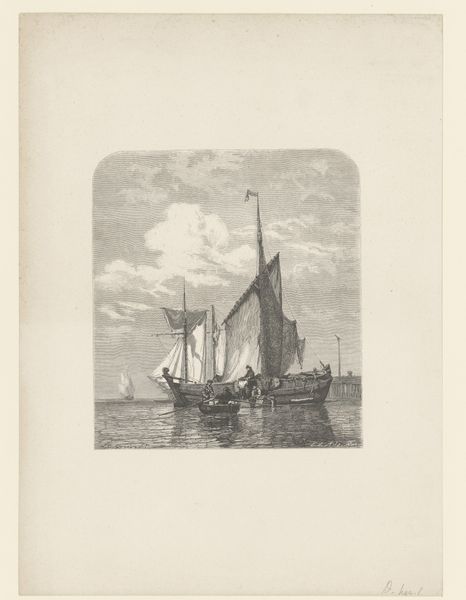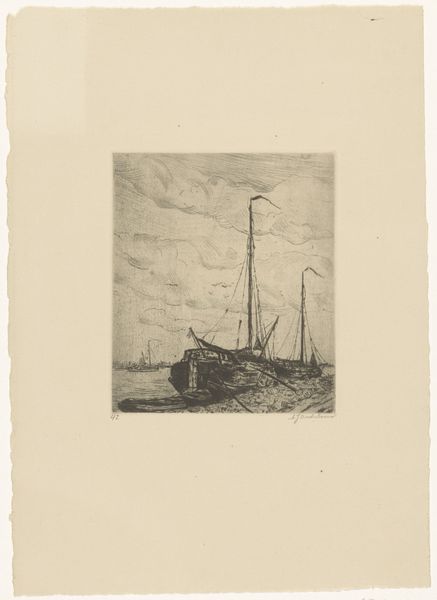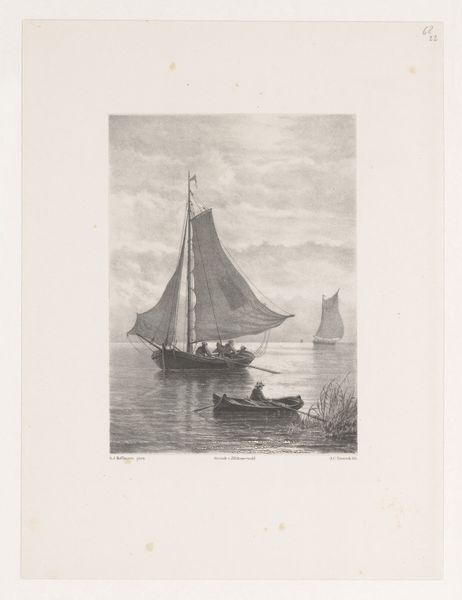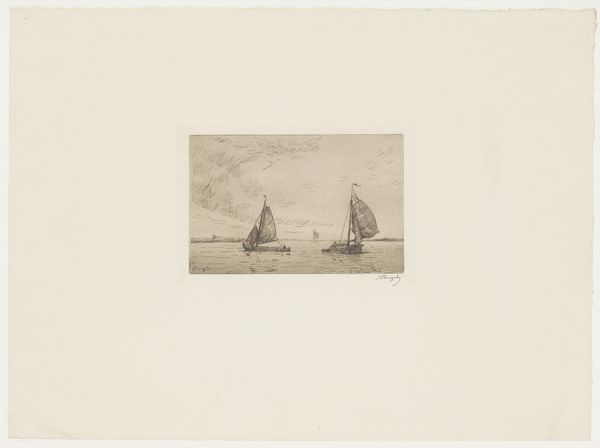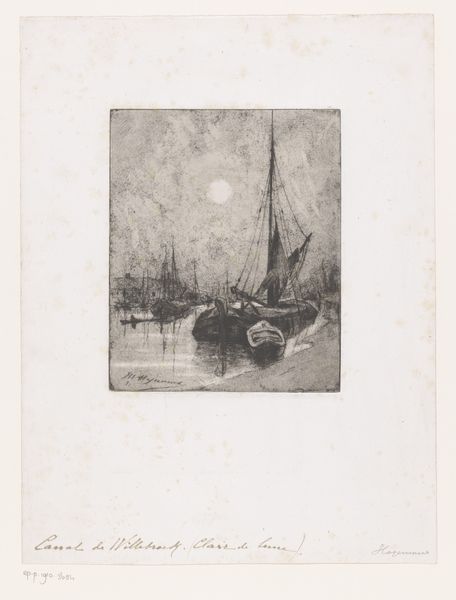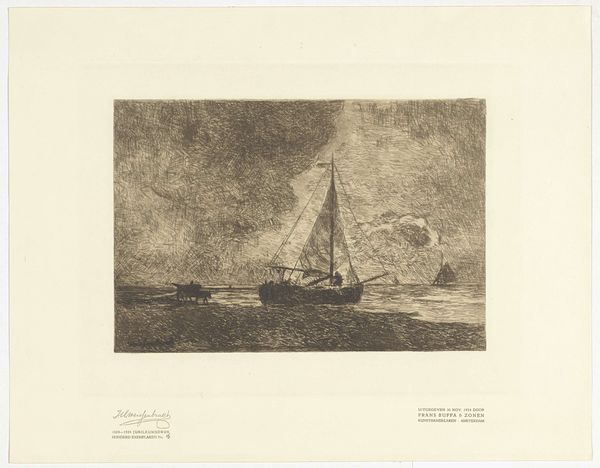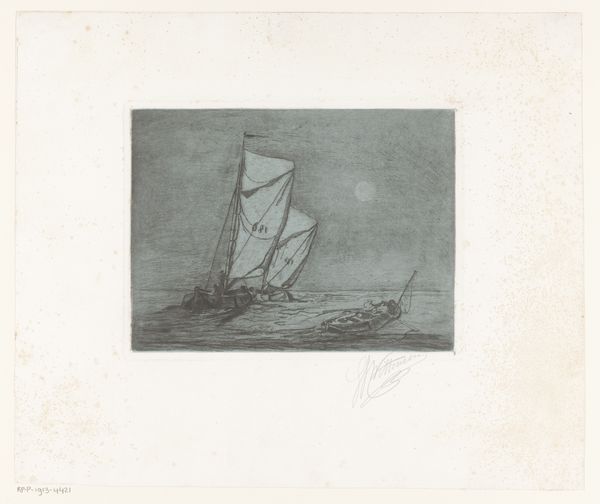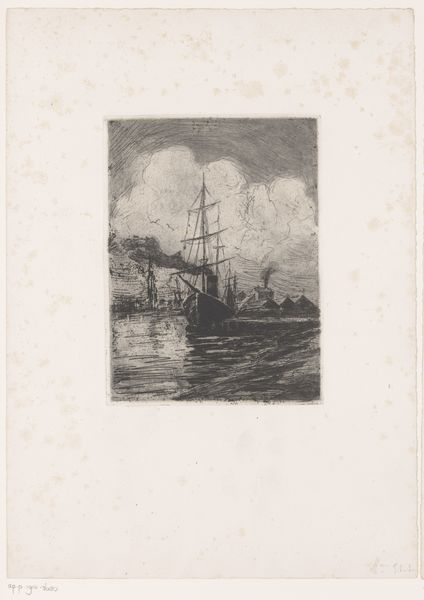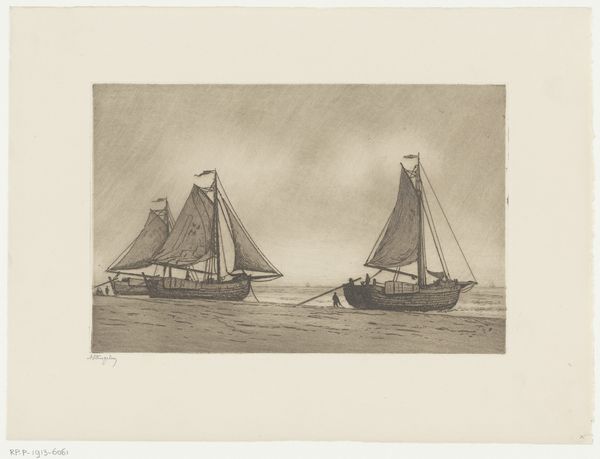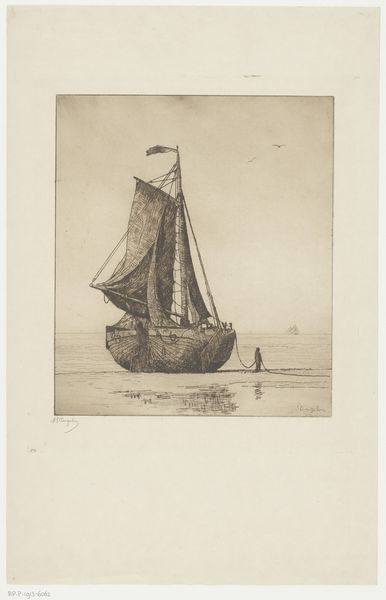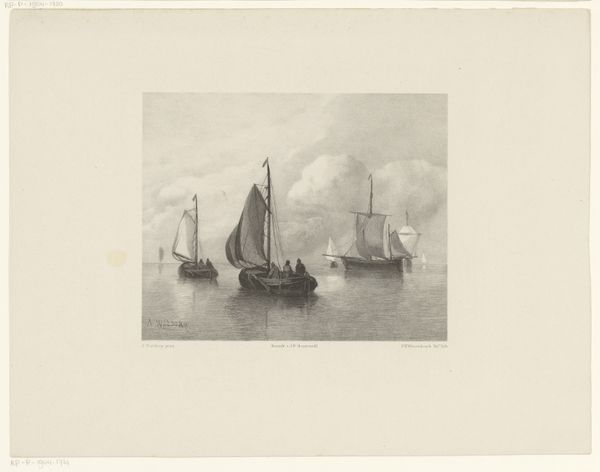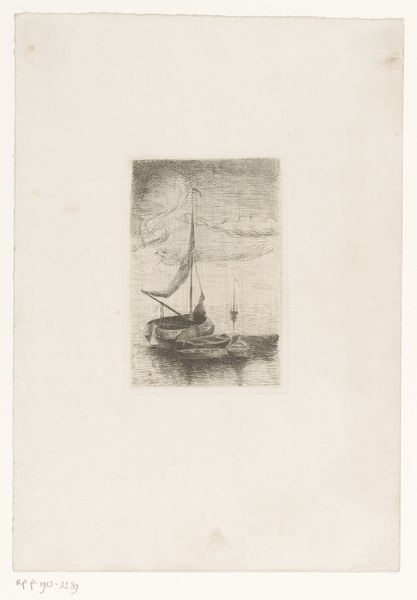
print, etching
#
natural tone
#
ink paper printed
# print
#
etching
#
landscape
#
form
#
line
#
watercolour illustration
#
genre-painting
#
realism
#
monochrome
Dimensions: height 186 mm, width 181 mm
Copyright: Rijks Museum: Open Domain
Curator: This print, titled "Zeegezicht met vissersboot", which translates to "Seascape with fishing boat," is an etching by Alphonse Stengelin, likely created sometime between 1862 and 1913. The use of ink on paper adds a delicate, almost dreamlike quality. Editor: My immediate reaction is of a heavy, muted nostalgia. The monochromatic palette combined with the somewhat blurred detail creates a strong sense of looking back, maybe reflecting on the hard lives of these fishermen. Curator: Yes, I'm particularly drawn to the materiality itself. Etchings, especially those of this period, were produced through a meticulous process involving coating a metal plate with wax, scratching an image into it, and then bathing it in acid. Each stage reveals not only artistic skill but industrial techniques, revealing the physical labour inherent in art production. Editor: And let's consider the social context; such a scene isn't merely picturesque. Fishing was a vital industry, and for many, a dangerous occupation marked by economic hardship. Stengelin may have sought to aestheticize that labor, or he might've aimed to document their way of life, seen on the verge of transformation with the advance of the modern age. What does it say about Stengelin’s own social class, portraying this labor? Curator: That contrast is key. This etching allows a mass distribution for a reasonable cost. By utilizing printmaking, Stengelin democratized access to what was a contemporary depiction of labor for the wider, arguably middle class, market. Editor: Thinking about who would purchase and view this work raises interesting questions of consumption. Was it viewed as a reminder of life outside their own experience, or an investment that appreciates in value? What kind of symbolic meaning and cultural capital did it accrue? Curator: Absolutely. The etching process and its subsequent market availability point directly towards art's intersection with industrial development. Each print carries within it, then, the signs of its making, its circulation, and ultimately its social life. Editor: Reflecting on our conversation, it becomes clear that, beyond the technical aspects, art provides crucial insights into the power dynamics of labour. Curator: Agreed, considering the work of Alphonse Stengelin through this lens reveals its depth and continuing significance.
Comments
No comments
Be the first to comment and join the conversation on the ultimate creative platform.

